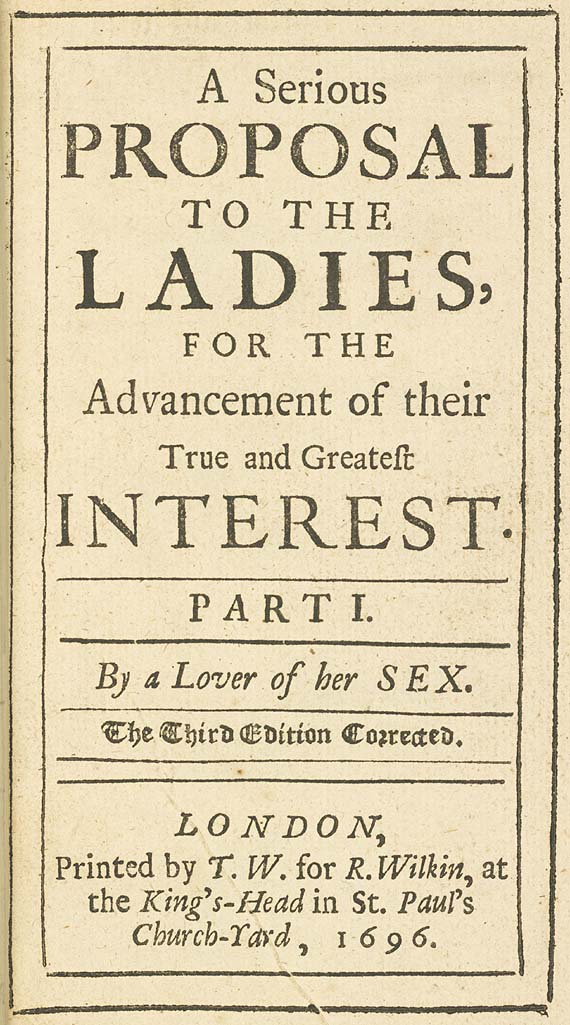14.2.1 The First Wave: For the Full Humanity, and Equal Rights, of Women
Valentin Quintus Nicolescu and Gregory Millard

The first wave of feminism is usually considered to have originated concurrent with the political revolutions of the late 18th century (especially the French Revolution). It should be noted, though, that some women in earlier periods had argued against the established view that God willed separate roles for men and women, with women positioned as subordinate “helpmeets” to men. For example, a debate known as the querelle des femmes (the woman question) saw Christine de Pizan (1364–1430) challenged misogyny in Renaissance Italian literature and poetry. In England, Mary Astell (1666–1731) asked why social contract theorists such as Hobbes and Locke managed to assert the natural equality of humans while also accepting the subordination of women. “If all men are born free, how is it that all women are born slaves?” she asked (see Springborg, 2006, and Kolbrener and Michelson, 2007).
The American and French Revolutions brought to the forefront of the modern political project ideals of equality before the law and popular sovereignty. This revolutionary political discourse addressed solely the rights of men. Women were excluded. Consequently, women began to demand access to an equal institutional status within the new framework provided by the emerging Western liberal-democratic regimes. They asserted that women have the same capacity for reason and civic virtue as men, provided they receive equal access to education. They challenged marriage laws that denied women the right to divorce, to own property, or to have custody of their children. They critiqued women’s limited access to the economic opportunities that were opening up in the newly emerging capitalist economies of the 18th and 19th centuries. And, finally, they asserted the need for equality before the law between men and women. This eventually culminated in the fight for the right to vote (women’s suffrage), the achievement of which marked the apogee of first wave feminism.
Media Attributions
- Astell Proposal © Mary Astell is licensed under a Public Domain license

